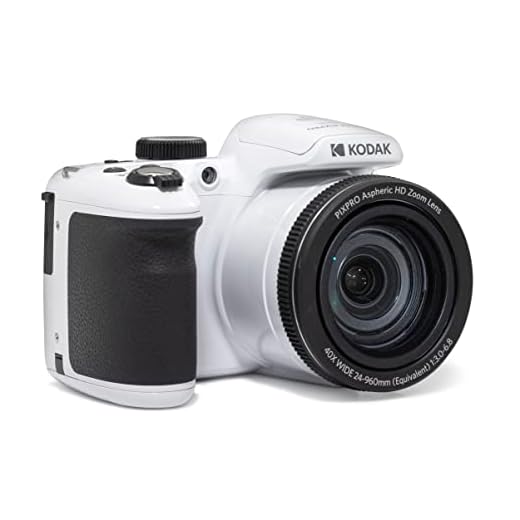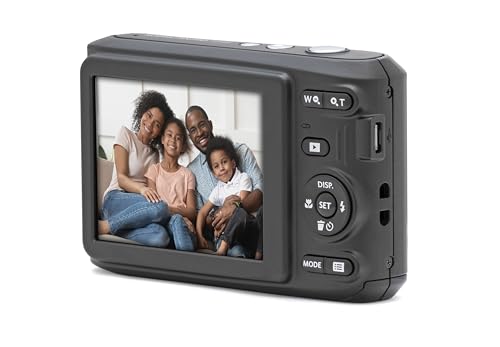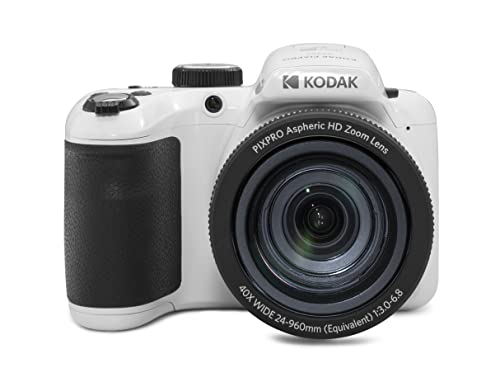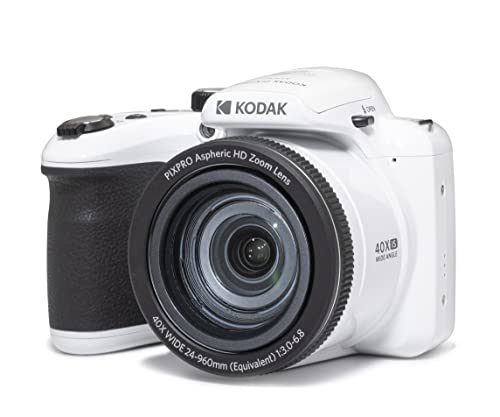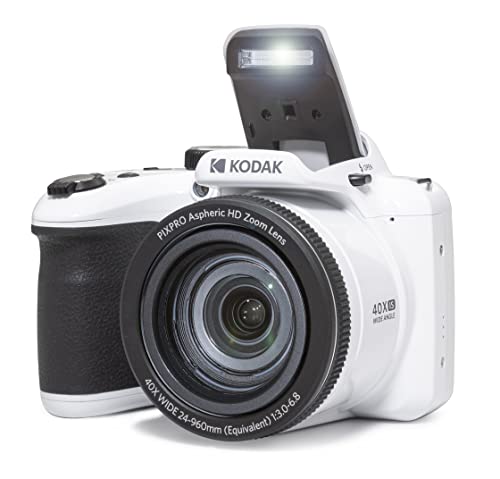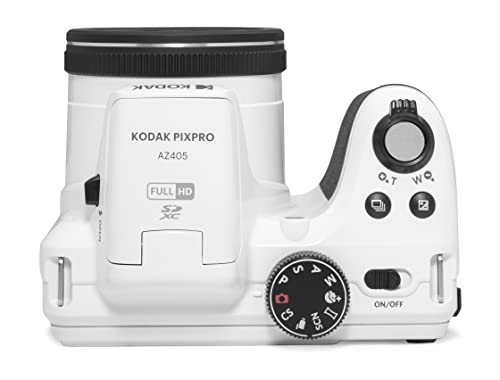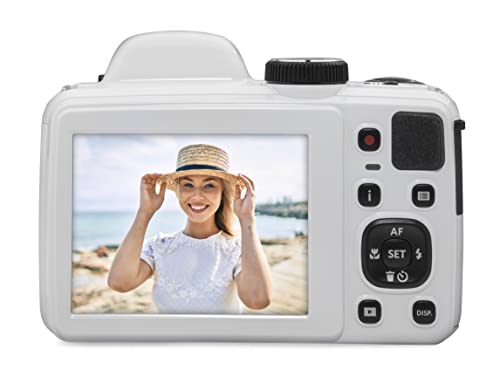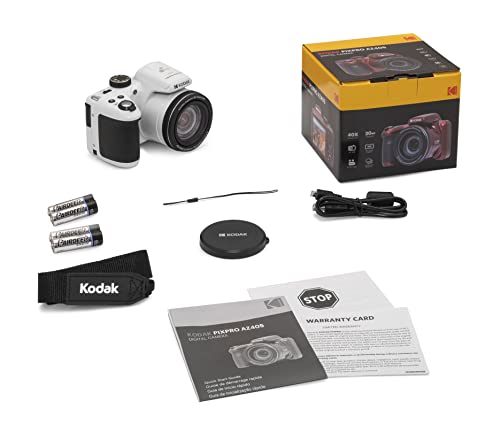




When it comes to digital cameras, there are a lot of factors to consider, from the lens quality to the sensor size. One of the most important considerations, however, is the pixel size.
Pixel size refers to the physical size of each individual pixel on the camera’s sensor. In general, larger pixels have the ability to capture more light, resulting in better image quality, especially in low-light conditions. On the other hand, smaller pixels can offer higher resolution and more detail.
The ideal pixel size for a digital camera depends on how you plan to use it. If you’re mainly interested in shooting in low-light environments or capturing fast-moving action, a larger pixel size will be beneficial. However, if you’re more focused on capturing high-resolution images that can be printed in large sizes, a smaller pixel size may be more suitable.
Ultimately, the best digital camera pixel size for you will depend on your specific needs and preferences. It’s important to consider factors such as how you plan to use the camera, the lighting conditions you usually shoot in, and the level of detail and resolution you require. By considering these factors and doing your research, you can find a digital camera with the perfect pixel size to meet your needs.
Why pixel size matters when choosing a digital camera
When it comes to selecting a digital camera, one of the most important factors to consider is the pixel size. The pixel size directly affects the quality of the images produced by the camera, and it plays a vital role in determining how clear and detailed your photos will be.
The pixel size refers to the physical size of each individual pixel on the camera’s image sensor. A larger pixel size means that each pixel can capture more light, resulting in better image quality. This is particularly important in low-light situations, where larger pixels can significantly improve the overall image clarity and reduce noise.
Additionally, a larger pixel size allows for better dynamic range, which is the ability of the camera to capture a wide range of tones and details in both dark and bright areas of the image. This means that photos taken with a camera that has larger pixels will have more accurate colors and better contrast.
It’s important to note that pixel size is not the only factor that determines image quality in a digital camera. Other aspects such as the camera’s sensor size, image processor, and lens quality also play a significant role. However, an understanding of pixel size can help you make a more informed decision when choosing a camera that will meet your specific photography needs.
- In conclusion, the pixel size of a digital camera is a crucial consideration when looking to capture high-quality images. Larger pixels offer advantages such as improved low-light performance, better dynamic range, and enhanced image clarity. By understanding the significance of pixel size, you can choose a camera that will deliver the image quality you desire for your photography.
Understanding the Relationship Between Pixel Size and Image Quality
When it comes to digital cameras, one of the factors that greatly affects image quality is the size of the pixels on the image sensor. Pixel size refers to the physical dimensions of each individual pixel on the camera’s sensor. Understanding the relationship between pixel size and image quality can help photographers make informed decisions when choosing a camera.
Pixel size and image resolution: The pixel size of a camera directly affects the resolution of the images it produces. Generally, cameras with larger pixels tend to have lower resolution, while cameras with smaller pixels have higher resolution. This is because a larger pixel can capture more light and detail, resulting in a more accurate representation of the image. On the other hand, smaller pixels can fit more densely on the sensor, allowing for higher resolution but potentially sacrificing some detail and image quality.
Low light performance and pixel size: Another important aspect to consider when it comes to pixel size is its impact on low light performance. In general, larger pixels are more sensitive to light and perform better in low light conditions. This means that cameras with larger pixels tend to produce less noise and better image quality in low light situations compared to cameras with smaller pixels. If you often find yourself shooting in low light environments, a camera with larger pixels may be a better choice.
Trade-offs and choosing the right pixel size: It’s important to note that there are trade-offs when it comes to pixel size and image quality. While larger pixels may offer better low light performance and overall image quality, they may also result in reduced resolution. On the other hand, smaller pixels may offer higher resolution but may struggle in low light conditions. Choosing the right pixel size depends on your specific needs and shooting conditions. For professional photographers or those who prioritize image quality over resolution, cameras with larger pixels may be the best option. On the other hand, if you prioritize resolution and detail, cameras with smaller pixels may be more suitable.
Conclusion: The size of the pixels on a digital camera’s sensor directly affects image quality, resolution, and low light performance. Understanding the relationship between pixel size and image quality can help photographers make informed decisions when choosing the best camera for their needs. Whether you prioritize image quality or resolution, finding the right balance between pixel size and other factors such as sensor size and lens quality is key to capturing stunning photographs.
The Benefits of Larger Pixel Sizes in Digital Cameras
As a passionate photographer, I have always been intrigued by the importance of pixel size in digital cameras. Through my experience and research, I have come to appreciate the significant benefits that larger pixel sizes bring to the table.
Improved Image Quality: One of the main advantages of larger pixel sizes is that they capture more light, resulting in improved image quality. With larger pixels, each individual pixel can gather more light information, leading to better color accuracy, dynamic range, and reduced noise levels in the final image.
Enhanced Low-Light Performance: Another notable benefit of larger pixel sizes is their ability to perform exceptionally well in low-light conditions. The larger pixels can capture more light even in dimly lit environments, allowing for clearer and more detailed photos in situations where lighting is limited.
Higher Signal-to-Noise Ratio: Large pixels have a higher signal-to-noise ratio compared to smaller pixels. This means that the captured image will have less noise, resulting in a cleaner and more professional-looking photograph. The improved signal-to-noise ratio is especially advantageous when shooting in high ISO settings, ensuring that the image quality remains uncompromised.
Increased Dynamic Range: The larger pixels in a sensor have the ability to capture a wider range of tonal values, leading to an increase in dynamic range. This means that the camera can capture both bright highlights and deep shadows with more detail and accuracy, resulting in well-balanced and visually appealing images.
Enhanced Detail and Sharpness: Larger pixel sizes allow for higher resolution images with better detail and sharpness. The ability to capture more light information enables the camera to render fine details and textures with greater precision, providing stunningly sharp images that are full of clarity.
In conclusion, the benefits of larger pixel sizes in digital cameras are undeniable. From improved image quality and low-light performance to a higher signal-to-noise ratio and increased dynamic range, these larger pixels play a crucial role in delivering remarkable photographs. As a photographer, investing in a camera with larger pixel sizes can truly make a difference in the quality and impact of your work.
How pixel size affects low light performance in digital cameras
As a photography enthusiast, I have always been curious about the technical aspects that contribute to great image quality in digital cameras. One of the key factors that significantly impacts the low light performance of a camera is the pixel size.
Pixel size refers to the physical dimensions of an individual pixel on the camera sensor. Larger pixel size allows more light to be captured, resulting in improved low light performance and reduced noise in the images.
When shooting in low light conditions, it is essential to have a digital camera with larger pixel size. The larger pixels can gather more light compared to smaller ones, which results in brighter and more detailed images with less noise. This is particularly important for capturing subjects in dark environments or during night photography.
Additionally, larger pixel size provides better dynamic range, allowing the camera sensor to capture a wider range of tones and details in both highlights and shadows. This means that even in challenging lighting situations, such as a brightly lit subject against a dark background, a camera with larger pixels can retain more details in both the bright and dark areas of the image.
It’s important to note that pixel size is just one aspect of a digital camera’s low light performance. Other factors such as sensor technology, image processing algorithms, and lens quality also play a significant role. However, when looking for a camera that can perform well in low light conditions, considering the pixel size is definitely a crucial factor to consider.
To summarize, larger pixel size in a digital camera leads to better low light performance, as it allows more light to be captured, resulting in brighter and more detailed images with less noise. Furthermore, larger pixel size provides a wider dynamic range, capturing more details in both highlights and shadows. So, if you want to capture stunning images in low light, make sure to pay attention to the pixel size when choosing your next digital camera.
Choosing the Right Pixel Size for Your Photography Needs
When it comes to choosing a digital camera, one of the most important factors to consider is the pixel size. The pixel size directly affects the image quality and the level of detail captured in your photographs. Therefore, it is crucial to choose the right pixel size for your specific photography needs.
First and foremost, you should determine the purpose of your photography. If you are a professional photographer who specializes in capturing intricate details and high-resolution images, a larger pixel size would be ideal. A higher number of pixels will allow you to enlarge and print your images without losing clarity and sharpness.
Advantages of a Larger Pixel Size:
- Increased image resolution and detail
- The ability to print larger-sized prints
- Better performance in low-light conditions
- Reduced noise in the image
On the other hand, if you are more of an amateur photographer or simply want to capture memories and share them on social media, a smaller pixel size may suffice for your needs. A smaller pixel size will result in smaller file sizes, making it easier to upload and share your photos online.
Advantages of a Smaller Pixel Size:
- Smaller file sizes, ideal for online sharing
- Less storage space required
- Faster image processing and editing
- Affordable price range
Ultimately, the choice of pixel size depends on your specific requirements and budget. It is important to carefully consider your photography needs, whether they involve professional work or casual snapshots, and make an informed decision based on those factors. By understanding the advantages and disadvantages of different pixel sizes, you can ensure that you choose the right camera to capture your memorable moments in the best possible way.
Exploring the trade-offs between pixel size and resolution in digital cameras
When it comes to choosing the best digital camera, one of the key factors to consider is the pixel size and its impact on overall image quality. Pixel size refers to the physical dimensions of each individual pixel on the camera’s image sensor. In general, larger pixels tend to capture more light and produce better image quality, while smaller pixels allow for higher resolution.
The trade-off between pixel size and resolution is an important consideration for photographers. On one hand, larger pixels can result in less noise and better low-light performance, as they are able to gather more light. This can be especially beneficial in situations where a high ISO setting is necessary. On the other hand, smaller pixels allow for a higher resolution, enabling photographers to capture more detail and produce larger prints.
It’s worth noting that the difference in pixel size may not be noticeable in everyday photography, especially when viewed on smaller screens or shared on social media platforms. However, for professional photographers or those interested in printing large, high-quality images, the pixel size can make a significant difference. It’s important to strike a balance between pixel size and resolution based on your specific photography needs and preferences.
- Pros of larger pixel size: improved low-light performance, reduced noise, better image quality in high ISO settings.
- Pros of smaller pixel size: higher resolution, more detail, ability to create larger prints.
- Considerations: the difference in pixel size may not be noticeable in everyday photography, finding a balance based on your specific needs is important.
In conclusion, the choice between pixel size and resolution in digital cameras involves trade-offs. While larger pixels can offer improved low-light performance and better image quality in high ISO settings, smaller pixels allow for higher resolution and more detail. Ultimately, the decision should be based on your photography needs and preferences.
The impact of pixel size on overall image sharpness and detail
When it comes to digital cameras, one of the key factors that affect image quality is the pixel size. The pixel size refers to the individual light-sensitive elements on the camera’s sensor, and it plays a significant role in determining how sharp and detailed your images will be.
Having larger pixels on the sensor allows each individual pixel to capture more light and information, resulting in better overall image quality. This is because larger pixels have a higher signal-to-noise ratio, meaning they can capture more light while minimizing the unwanted noise that can degrade image quality. As a result, images taken with cameras that have larger pixel sizes tend to have less noise and more accurate color reproduction.
Additionally, larger pixels also contribute to the overall sharpness of the image. With more light gathered per pixel, the camera has more data to work with when processing the image. This leads to better edge detection and sharper details in the final output. On the other hand, cameras with smaller pixel sizes may struggle to capture fine details, especially in low-light conditions, as the smaller pixels have less light-gathering ability and may introduce more noise into the image.
In conclusion, the size of the pixels on a digital camera sensor has a significant impact on image quality. Cameras with larger pixel sizes generally produce sharper and more detailed images, with better color accuracy and less noise. It is worth considering pixel size when comparing different camera models, especially if you prioritize image quality in your photography.
Overcoming common misconceptions about pixel size in digital cameras
When it comes to digital cameras, one common misconception is that a higher pixel count automatically translates to better image quality. However, it’s important to understand that pixel size plays a crucial role in determining the overall image quality, not just the number of pixels.
Pixel size refers to the physical size of each individual pixel on the camera sensor. A larger pixel size allows more light to be captured, resulting in better low-light performance and reduced noise. On the other hand, a smaller pixel size may lead to decreased sensitivity, especially in low-light conditions.
Another misconception is that a higher megapixel count is necessary for producing high-quality prints or for professional photography. While a higher megapixel count can offer more flexibility for cropping and larger prints, it’s not always necessary for every situation. In fact, a camera with a lower megapixel count but larger pixels can often produce better image quality with accurate color reproduction and improved dynamic range.
It’s also important to consider the intended use of the camera and the type of photography. For example, if you’re primarily shooting in well-lit conditions or plan to print small-sized images, a camera with a lower pixel count but larger pixels may be more than sufficient. On the other hand, if you’re shooting in low light or need the flexibility to crop or print large-sized images, a higher megapixel count with smaller pixels may be more suitable.
In conclusion, pixel size is an important aspect to consider when choosing a digital camera. It’s essential to look beyond the megapixel count and understand how pixel size can impact image quality in different shooting conditions. By overcoming these common misconceptions, you can make a more informed decision and select a camera that suits your specific needs and preferences.
The future of pixel size: advancements and trends in digital camera technology
In recent years, the digital camera industry has seen significant advancements in pixel size, leading to improved image quality and enhanced capabilities. As technology continues to evolve, it is expected that pixel size will continue to play a crucial role in shaping the future of digital cameras.
One of the key trends in digital camera technology is the increasing pixel count. Manufacturers are constantly striving to incorporate higher megapixel sensors into their cameras, offering users the ability to capture images with incredible detail and resolution. However, it is important to note that pixel count alone does not determine the overall image quality. Factors such as sensor size, image processing algorithms, and lens quality also contribute to the final image result.
Advancements and innovations in pixel size have also led to improved low-light performance in digital cameras. Larger pixels are more sensitive to light, allowing for better image quality in low-light conditions. This is especially beneficial for photographers who enjoy shooting in challenging environments or at night. As pixel sizes continue to increase, we can expect digital cameras to deliver even better low-light performance in the future.
Another exciting development in the field of pixel size is the emergence of backside-illuminated (BSI) sensors. Unlike traditional front-illuminated sensors, BSI sensors rearrange the circuitry on the sensor to allow more light to reach the pixels. This results in improved sensitivity and reduced noise, particularly in low-light environments. BSI sensors have become increasingly popular in recent years and are expected to become more prevalent in future digital camera models.
In conclusion, advancements in pixel size have revolutionized the digital camera industry by improving image quality and low-light performance. The increasing pixel count, coupled with innovations such as BSI sensors, will continue to shape the future of digital cameras. Whether you’re a professional photographer or an enthusiast, these advancements offer exciting possibilities for capturing stunning images in any lighting condition.
Best digital camera pixel size
Features
| Model | W08 |
| Color | YL15-W08-C-Black |
| Is Adult Product |
Features
| Part Number | 26837074 |
| Is Adult Product | |
| Edition | 1 |
| Language | English |
| Number Of Pages | 400 |
| Publication Date | 2018-01-09T00:00:01Z |
| Format | Illustrated |
| Price history for Camera Quality Benchmarking Guide | |
|---|---|
|
Latest updates:
|
|
Features
| Part Number | VD5050IPC |
| Model | VD5050IPC |
| Warranty | 2 year manufacturer |
| Release Date | 2020-03-13T00:00:01Z |
| Size | 1 Count (Pack of 1) |
Features
| Part Number | X5_1TB |
| Model | X5_1TB |
| Warranty | 1 year limited |
Features
| Part Number | 2727C002 |
| Model | 2727C002 |
| Warranty | 1 year manufacturer |
| Color | Black |
| Release Date | 2019-03-06T00:00:01Z |
| Size | 55mm |
| Price history for Canon EOS Rebel T7 DSLR System | |
|---|---|
|
Latest updates:
|
|
Features
| Part Number | FZ45BK |
| Model | FZ45BK |
| Warranty | Limited 1-Year Warranty |
| Color | Black |
| Release Date | 2022-10-03T00:00:01Z |
| Price history for KODAK Friendly Zoom FZ45 Digital Camera | |
|---|---|
|
Latest updates:
|
|
Features
| Part Number | AZ405-WH |
| Model | AZ405-WH |
| Warranty | 1 year manufacturer |
| Color | White |
| Release Date | 2022-11-05T00:00:01Z |
| Language | English |
| Price history for KODAK AZ405 20MP Vlogging Camera | |
|---|---|
|
Latest updates:
|
|
Question and answers:
What is the best pixel size for a digital camera?
There is no one-size-fits-all answer to this question as the best pixel size for a digital camera depends on various factors such as intended use, budget, and personal preference.
Is higher pixel size always better for a digital camera?
Higher pixel size does not necessarily mean better image quality. Other factors like sensor size, lens quality, image processing, and lighting conditions also play a crucial role in determining overall image quality.
What is the advantage of a higher pixel size?
A higher pixel size can allow you to capture more details in your images, especially when it comes to cropping and zooming. It also provides more flexibility in post-processing and printing.
Can a smartphone with a high-pixel camera compete with a digital camera?
While smartphone cameras have improved significantly in recent years, they still cannot compare to the image quality and versatility of a dedicated digital camera with a higher pixel size. Digital cameras generally have larger sensors and better lens options.
What should I consider when choosing a digital camera pixel size?
When choosing a digital camera, consider factors such as your intended use (casual photography, professional work, etc.), the desired level of image quality, your budget, and the available accessories and lenses for the camera.



